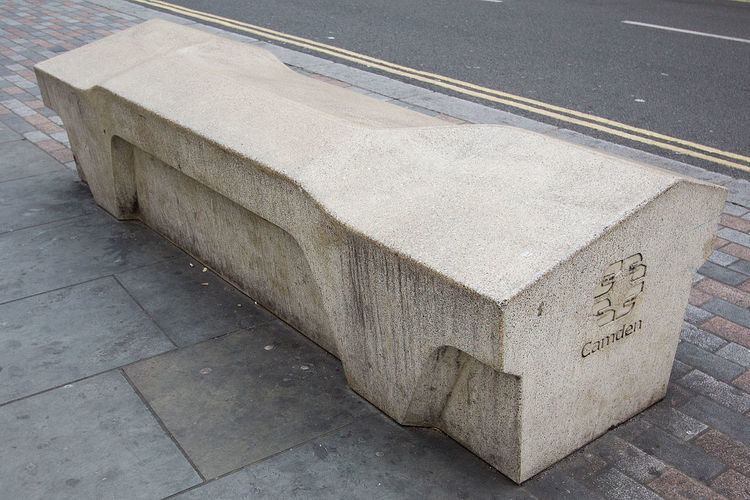 | ||
The Camden bench is a type of concrete street furniture. It was commissioned by the Camden London Borough Council and installed in Camden, London in 2012. It is designed specifically to influence the behaviour of the public by restricting undesirable behaviour, a principle known as hostile architecture, and instead be usable only as a bench. Because the design is "defined far more by what it is not than what it is" the bench has been called the "perfect anti-object" and a "masterpiece of unpleasant design". "Feature sites" for introduction of the bench were on Great Queen Street and High Holborn.
Contents
Produced by UK company Factory Furniture, the bench is designed to deter use for sleeping, littering, skateboarding, drug dealing, graffiti and theft. It attempts to achieve this primarily through angular surfaces (deterring sleepers and skateboarders), an absence of crevices or hiding places, and non-permeable materials (a waterproof anti-paint coating). It is not secured to the ground and can be moved by a crane attaching to built-in anchor points. Due to its weight it is also designed to function as a roadblock.
A Camden bench has been used as part of an installation artwork by Roger Hiorns.
Awards
The design has achieved several awards:
It has also been accredited as:
Criticism
The Camden bench received cultural criticism as being a prime example of a wider trend of urban design that is anti-homeless, known as hostile architecture. The designers contend that: "Homelessness should never be tolerated in any society and if we start designing in to accommodate homeless then we have totally failed as a society. Close proximity to homelessness unfortunately makes us uncomfortable so perhaps it is good that we feel that and recognise homelessness as a problem rather than design to accommodate it."
Critics also claimed it is emblematic of a society where freedom in public space has been curtailed and deviance from accepted forms of behaviour have been made impossible. The designers claim in response: "[Because] there is no 'correct' way to sit on it... it becomes a far more inclusive seat encouraging social interaction."
Popular criticism focused on subverting restrictions imposed by the bench, for example by attempting to skateboard on it.
Specifications
The technical specifications are:
